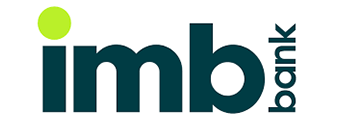Help to Buy is a scheme intended to make it easier for low- to middle-income households to buy property. Legislation allowing the scheme passed the Federal Parliament in November 2024.
All going to plan, Aussies should be able to start applying in 2025. The scheme was initially expected to be up and running in 2024.
Help to Buy goes further than initiatives like the Home Guarantee Scheme (HGS), where the Federal Government essentially goes guarantor for a certain percentage of eligible buyers' home loans – up to 18%.
Under Help to Buy, the Government will actually make a potentially substantial contribution towards a buyer's property purchase and hold ownership over an equivalent portion of their home.
Former Minister for Housing Julie Collins said Help to Buy could save mortgage holders hundreds of dollars each month.
"It won't just be a leg up into home ownership with savings from a smaller deposit – it will provide long‑term relief to Australians who are part of the scheme," Ms Collins said.
Like the HGS, Help to Buy will be administered by the independent national housing authority, Housing Australia.
What is the Help to Buy Scheme?
Help to Buy will see the Government making a contribution of up to 40% of the purchase price for eligible home buyers. It isn't exactly a hand out – you will be expected to pay this back over time or hand over an equivalent portion of any proceeds when you sell.
That means, if the Government contributes 40% of the money needed to buy a property, the home owner will need to hand over 40% of the property value when and if they sell, even if the property's value has risen or fallen in the time they've owned it.
In the meantime, you won't be charged rent or interest on the Government's stake.
Who is eligible
As it stands, to be eligible for Help to Buy assistance, applicants must meet the following conditions:
-
Be an Australian citizen over 18 years old
-
Satisfy income tests (maximum $100,000 annually for individuals, $160,000 for couples)
The Albanese Government previously confirmed to Infochoice Group these caps will be adjusted with the Wage Price Index, meaning they should rise alongside wages more broadly over time. -
Property must not exceed value cap for its area
-
Must live in the property
-
Must not be receiving other assistance (the FHG for example)
Those also making the most of state-based first home owner grants will be able to turn to the scheme. -
Must be able to satisfy other costs of buying like stamp duty, bank fees, etc
-
Must not already hold a 'disqualifying interest' in Australian property
As it stands, there could be some exceptions to this requirement for single parents.
How much will the Government contribute?
The Government's maximum equity contribution will be 30% of the purchase price for an existing property and 40% of the purchase price of a new build. It's minimum equity contribution will be 5%.
You'll need to have a deposit of at least 2% to use the scheme, and the combined Commonwealth contribution plus your deposit needs to be at least 20% so to ensure you avoid paying for lenders mortgage insurance (LMI).
The stake the Government has in your property will remain unchanged even if the property's value changes.
For example, lets say you buy a property worth $500,000 with the help of a $100,000 boost from help to buy. That means the Government would have a 20% stake.
And let's assume that, when the time comes to sell, your property's value has gone way up and is now $750,000.
If you hadn't previously bought out any of the Government's equity, it's 20% stake would have increased to $150,000 and you'd have to hand those funds over.
This works in both directions though. Had the property's value dropped to $400,000, the Government's stake would be worth just $80,000.
As mentioned previously, a buyer using the scheme can buy back some or all of the Government's stake when and if they're able to.
How it will work
The Government is planning to offer 40,000 places in the scheme over four years, so 10,000 places each year. These places will be distributed between states depending on population (more on this later).
Repaying the Government will depend on the capacity of the borrower to do so. Participants will be required to be assessed by their lender periodically to see if they're in a position to repay the Government, either in full or partially (repaying a minimum of 5% at a time).
As it stands, the legislation gives Housing Australia flexibility in how it will determine whether or not participants are required to start buying the Government out.
There will also be periodic reviews into whether the income of the borrower/s has passed the set thresholds, which could trigger a requirement for repayment. If this were to occur, the borrower would likely be asked to return to their lender to work out if they could take on more debt in order to buy some or all of the Government's stake in the property.
How to apply for Help to Buy
There's no way to apply for Help to Buy at the moment, since it hasn't yet been confirmed that it will go ahead. However, applications will likely be made through Housing Australia.
How much could you save using Help to Buy?
The potential savings from the Help to Buy scheme will vary widely depending on the property value, the size of the Government contribution, and future home loan interest rates.
As an illustration, let's imagine you're buying a property for $600,000 and you've got a 5% deposit, which amounts to $30,000.
Getting a home loan without Help to Buy
Without assistance from Help to Buy, you would likely end up with a $570,000 home loan.
The most recent RBA data has the average variable rate for new loans at 6.3% p.a, which means (assuming a 30 year loan term) you'd face monthly repayments of $3,528, as per Your Mortgage's repayment calculator.
You would also likely be charged an LMI premium of about $31,000, according to Your Mortgage's LMI calculator.
Servicing a mortgage with Help to Buy
Now lets say Housing Australia agrees the Government will make an equity contribution of 30%, or $180,000.
That could mean you only borrow $390,000. With a 30-year loan term and an interest rate of 6.3% p.a, your monthly repayments would be $2,414 - a saving of more than $1,100 each month, not to mention the cost of LMI.
Help to Buy Scheme by State
Beyond the Federal Parliament, each state and territory will need to pass its own legislation for Help to Buy to operate. Queensland was the first to do so in mid-2024.
Assuming this all goes ahead without a hitch, the 10,000 places will be distributed between all eight states and territories evenly, relative to the population size.
There will also be different value caps for properties between regions.
As it stands, this will be the situation:
NSW
-
Approximate places: 3,111
-
Price cap in Sydney and regional centres: $1,300,000
-
Price cap in rest of NSW: $800,000
Victoria
-
Approximate places: 2,555
-
Price cap in Melbourne and regional centres: $950,000
-
Price cap in rest of Victoria: $650,000
Queensland
-
Approximate places: 2,037
-
Price cap in Brisbane and regional centres: $1,000,000
-
Price cap in rest of Queensland: $700,000
Western Australia
-
Approximate places: 1,074
-
Price cap in Perth and regional centres: $850,000
-
Price cap in rest of Western Australia: $600,000
South Australia
-
Approximate places: 704
-
Price cap in Adelaide and regional centres: $900,000
-
Price cap in rest of South Australia: $500,000
Tasmania
-
Approximate places: 222
-
Price cap in Hobart and regional centres: $700,000
-
Price cap in rest of Tasmania: $550,000
Northern Territory
-
Approximate places: 111
-
Price cap in the Northern Territory: $600,000
Australian Capital Territory
-
Approximate places: 185
-
Price cap in the ACT: $1,000,000
Considering buying your first home? Here are some of the most competitive home loans on the market for first home buyers right now:
| Lender | Home Loan | Interest Rate | Comparison Rate* | Monthly Repayment | Repayment type | Rate Type | Offset | Redraw | Ongoing Fees | Upfront Fees | Max LVR | Lump Sum Repayment | Additional Repayments | Split Loan Option | Tags | Row Tags | Features | Link | Compare | Promoted Product | Disclosure |
|---|---|---|---|---|---|---|---|---|---|---|---|---|---|---|---|---|---|---|---|---|---|
5.69% p.a. | 5.95% p.a. | $2,899 | Principal & Interest | Fixed | $0 | $530 | 90% |
| Promoted | Disclosure | |||||||||||
5.74% p.a. | 7.59% p.a. | $2,915 | Principal & Interest | Fixed | $0 | $0 | 95% | ||||||||||||||
5.79% p.a. | 6.22% p.a. | $2,931 | Principal & Interest | Fixed | $6 | $799 | 80% |
Article first published in August 2024, last updated in November 2024.
Image by cait on Unsplash.







Share